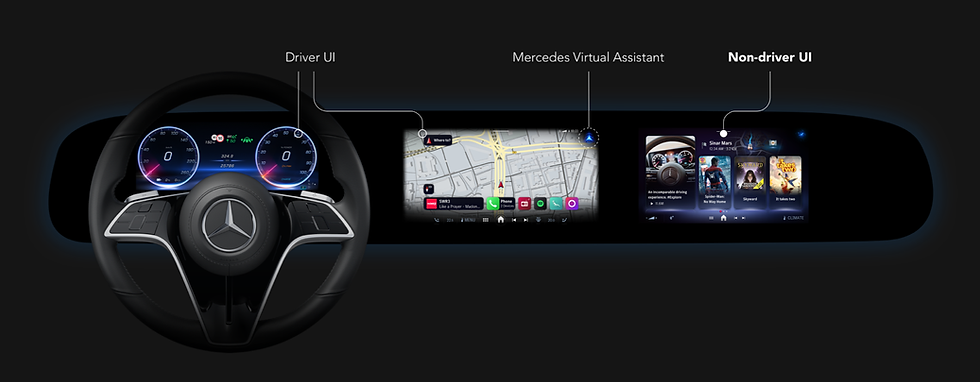
Passenger UI System — Multi-screen HMI for Mercedes-Benz MB.OS
Background
Future mobility experiences extend beyond drivers — passengers now expect rich, adaptive in-car interfaces. I led the first cross-cultural, cross-domain Passenger UI System in Mercedes-Benz, positioning China UX as the driver of a global, multi-platform experience for the MMA platform.
What I Led
-
Sole UX lead for the passenger HMI system, designing the multi-layer UI architecture, interaction logic, and adaptive content delivery across screen surfaces.
-
Bridged design language and product logic between China R&D and German HQ, integrating user research, platform architecture, and user expectations into a coherent interaction model.
-
Built a content-first system powered by Abacus.AI, enabling smart recommendations across a curated ecosystem of apps, streaming providers and media platforms.
-
Redefined the passenger experience from “embedded app launcher” to AI-driven dynamic content cards, tailored to preference, route context, and multi-user behavior.
Outcomes & Impact
-
Passenger UI logic and structure launched for 3+ global vehicle lines, becoming the base model for future MMA platform passenger screens.
-
Reframed UX’s strategic role, from feature delivery to system ownership — establishing a new China-to-Germany product definition workflow.
-
Solution featured at Auto Show and highlighted by CEO as a signal of UX-led product direction.
-
Marked the first time a China-led HMI architecture reshaped global strategy — shifting UX from execution to upstream co-lead.
This project redefined passenger screens as an intelligent, adaptive UI system — transcending entertainment to become a strategic layer of future in-car UX.

